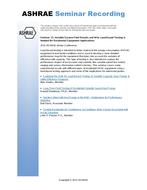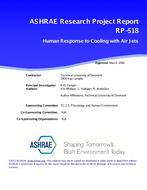Click here to purchase
This paper covers field measurements and hygrothermal simulation results about post-retrofit building envelope performance of two wood-frame multi-unit residential buildings with rigid exterior insulation added during the retrofitting in the coastal climate of British Columbia. Building No. 1 had 2 in. (50 mm)thick expanded polystyrene insulation boards installed in its exterior walls during re-cladding, and tapered polyisocyanurate insulation boards inthickness from 4 in. (100 mm) to 1 in. (25 mm) installed on its low-slope vented roof during re-roofing. Building No. 2 had 3 in. (75 mm) thickmineral wool insulation boards installed in its exterior walls. Moisture content and relative humidity sensors were installed in these wall and roofassemblies, at a total of 12 measurement locations to assess post-retrofit building envelope performance. The field measurements confirmed that the exteriorinsulation greatly reduced fluctuations in both temperature and relative humidity for the plywood exterior sheathing, and in particular, kept the sheathingwarm and the relative humidity low in the cold and damp winter. The expanded polystyrene and mineral wool insulation boards installed in the exteriorwalls of these two buildings caused small differences in driving forces and potential directions of vapour flow, particularly under warm weather conditions.The hygrothermal simulations carried out for these assemblies produced results reasonably close to field measurements. And the simulation models can beused for assessing the hygrothermal performance of the retrofitted envelopes in other climate conditions.
Citation: Thermal Buildings XIV 2019
Product Details
- Published:
- 2019
- Number of Pages:
- 9
- Units of Measure:
- Dual
- File Size:
- 1 file , 1.2 MB
- Product Code(s):
- D-Bldgs19-065


